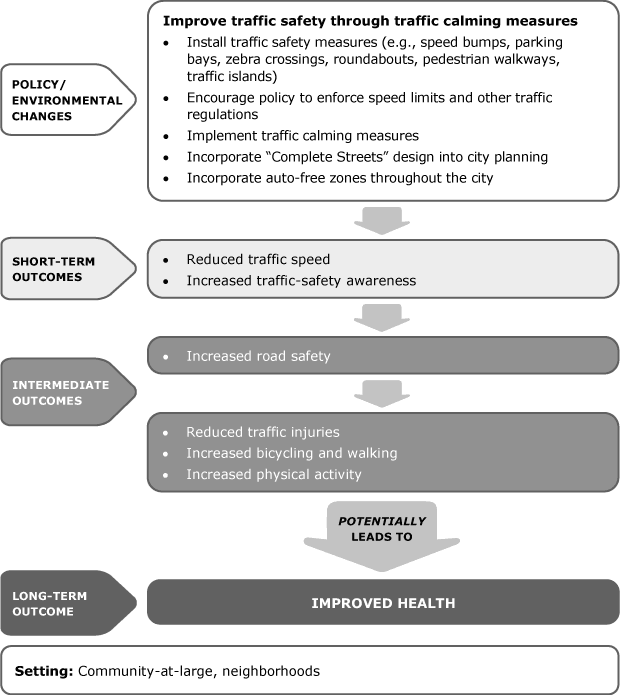Our Healthier Communities
Our Healthier Communities Initiatives are built on the concept that local communities can work together to give all community members healthy choices and support the pursuit of healthy lifestyles. More than 160 Ys are working in collaboration with community leaders to make changes in policies and the physical surroundings in those communities so that healthy living is within reach for individuals of all ages and backgrounds.
Improve Traffic Safety Through Traffic Calming Measures
In areas where safety measures have been implemented, children are more likely to play outside and walk or bike to school. Safety from traffic and related injury is an important element of getting people to be physically active.
Safety from traffic and related injury is an important element of getting people physically active. Implementing traffic calming measures has the potential to reduce traffic injuries and increase bicycling and walking. A study reported a 10 to 15 percent reduction in injury accidents following the implementation of traffic calming schemes in the United States. In residential areas, the reduction reaches 25 percent. Children are more likely to play outside and walk or bike to school in areas that have speed bumps, crosswalks, roundabouts, and other safety measures installed. Outside the United States, policies to improve traffic safety have dramatically reduced traffic deaths in the Netherlands and Germany. These policies include the implementation of auto-free zones, lower speed limits, and strict regulations protecting pedestrians and bicyclists.
References
- Bunn, F., Collier, T., Frost, C., Ker, K., Roberts, I., & Wentz, R. (2003). Traffic calming for the prevention of road traffic injuries: Systematic review and meta-analysis. Injury Prevention, 9, 200–204.
- Elvik, R. (2001). Area-wide urban traffic calming schemes: a meta-analysis of safety effects. Accident Analysis and Prevention, 33(3), 327–336
- Leden, L, Wikstrom, P-E, Garder, P., & Rosander, P. (2006). Safety and accessibility effects of code modifications and traffic calming of an arterial road. Accident Analysis and Prevention, 38, 455–461.
- Macbeth, A.G. (1999). Bicycle lanes in Toronto. Institute of Transportation Engineers, 69(4), 6.
- Morrison, D., Thomson, H., & Petticrew, M. (2004). Evaluation of the health effects of a neighborhood traffic calming scheme. Journal of Epidemiology and Community Health, 59(10), 837–840.
- Tester, J.M., Rutherford, G.W., Wald, Z., & Rutherford, M.W. (2004). A matched case control study evaluating the effectiveness of speed humps in reducing child pedestrian injuries. American Journal of Public Health, 94(4), 646–650.
- Pucher, J., & Dijkstra, L. (2003). Promoting safe walking and cycling to improve public health: Lessons from the Netherlands and Germany. American Journal of Public Health, 93(9), 1509–1516.
